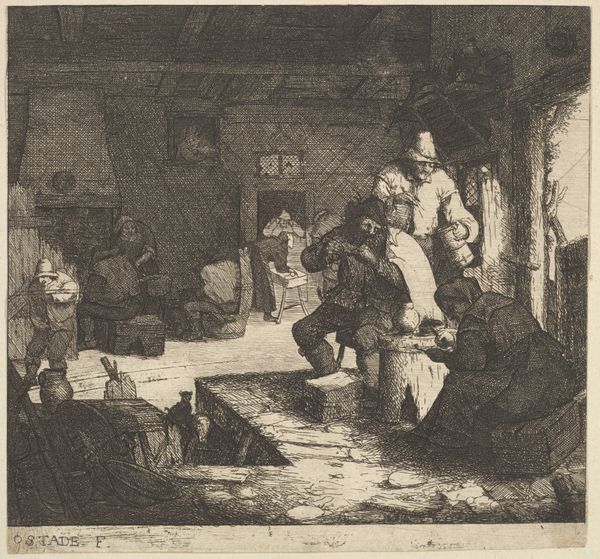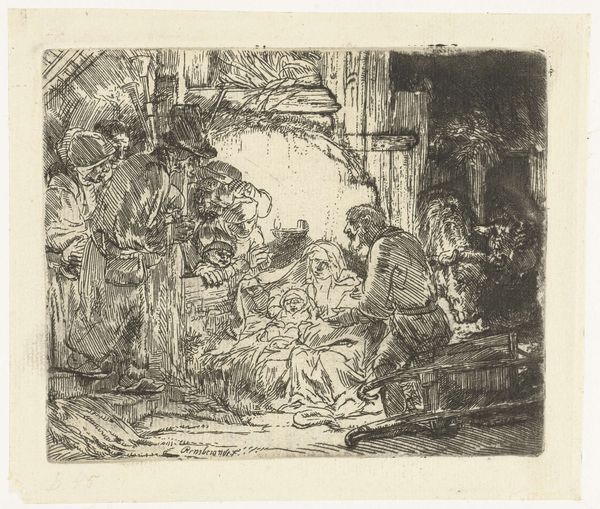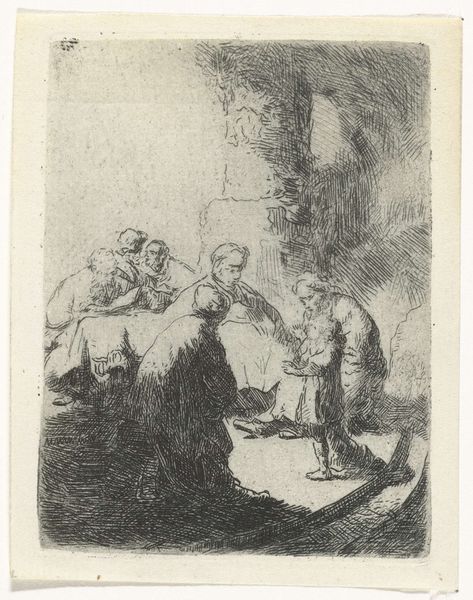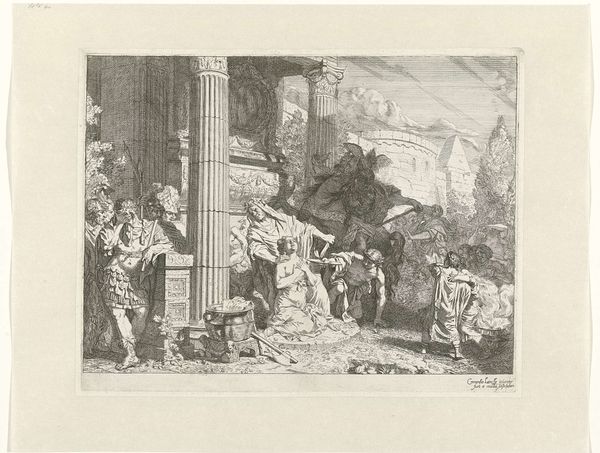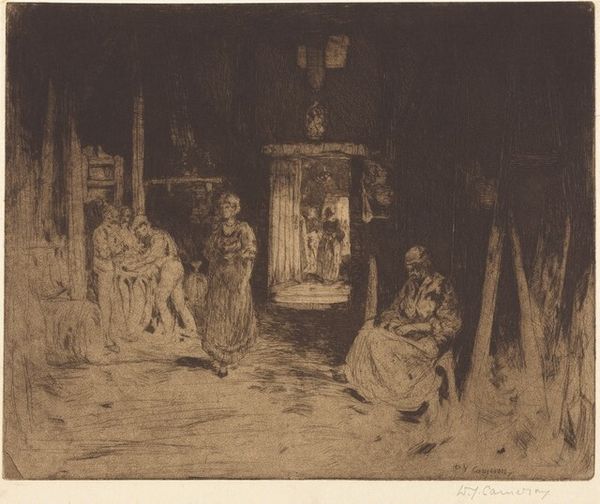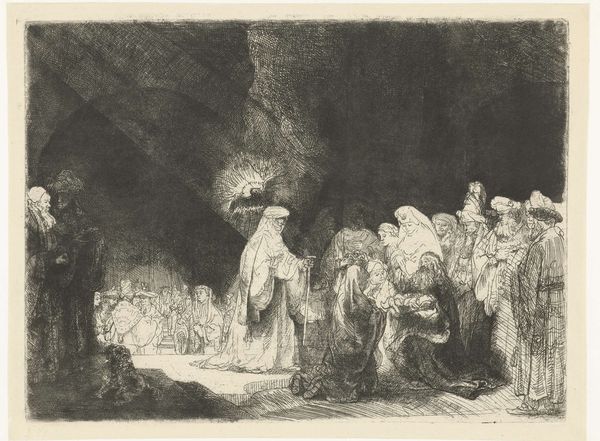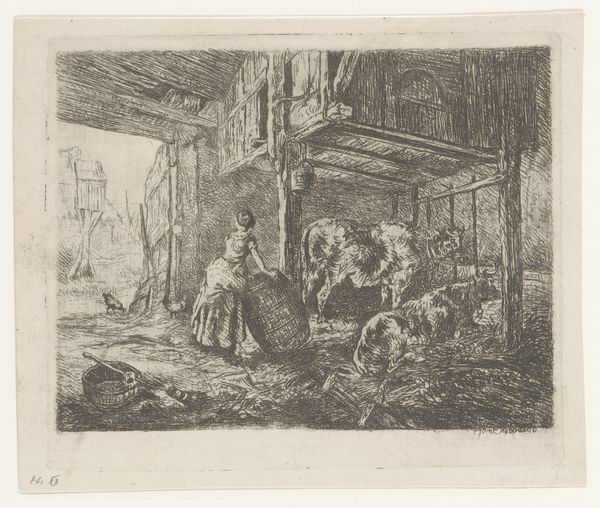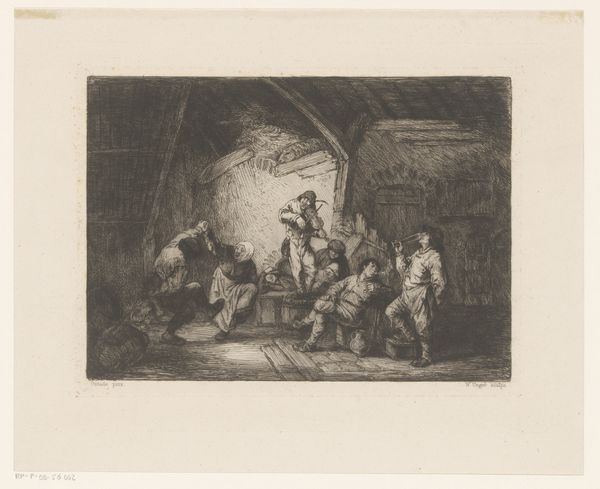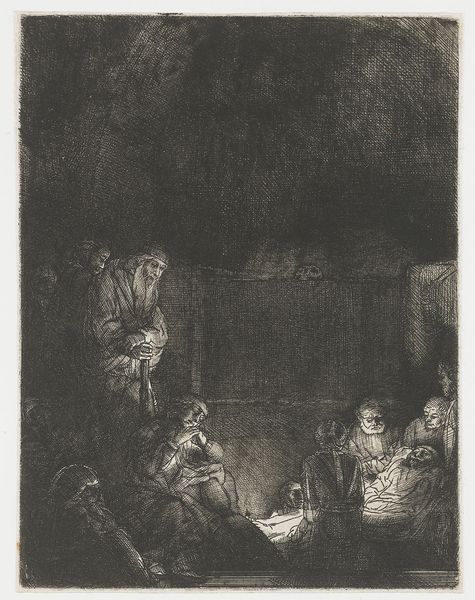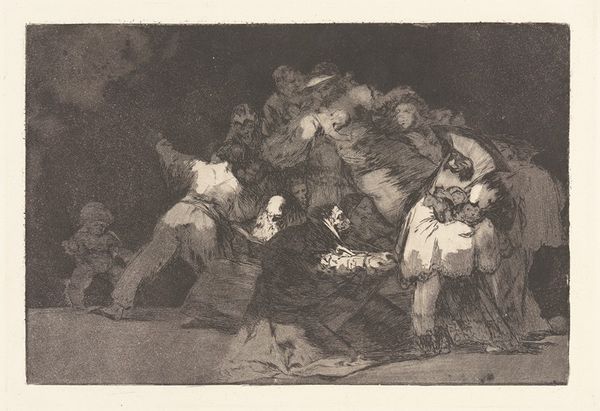
print, etching, intaglio, engraving
#
light pencil work
#
quirky sketch
#
dutch-golden-age
# print
#
pen sketch
#
etching
#
intaglio
#
pencil sketch
#
old engraving style
#
figuration
#
personal sketchbook
#
pen-ink sketch
#
line
#
sketchbook drawing
#
genre-painting
#
sketchbook art
#
engraving
#
pencil art
Dimensions: height 131 mm, width 139 mm
Copyright: Rijks Museum: Open Domain
Curator: Adriaen van Ostade’s intaglio print, "Rokers in een herberg," created sometime between 1620 and 1685, captures a scene of figures gathered in a tavern setting. The work currently resides in the Rijksmuseum collection. Editor: It looks dark, like a fleeting glimpse into a den filled with worn materials and weary bodies. I immediately notice the contrasts of light and shadow, probably inherent to the etching process. Curator: Indeed. The engraving exemplifies the interest in genre painting characteristic of the Dutch Golden Age. The tavern, a common meeting place, provides a space for social interaction, but also symbolic weight of gathering and community. Notice the figures in various states of repose and interaction. Each contributes to a tableau of everyday life but loaded with a cultural continuity that stretches far beyond the immediate scene. Editor: I’m curious about the intaglio technique employed. By cutting into a metal plate and using ink to create the image, what was it like? This allowed for multiples, of course, democratizing art. Was this viewed simply as commercial craft at the time? Did that affect van Ostade’s process? I see different depths to the lines here and must have required skill. Curator: The smoking itself becomes a symbolic element – almost ritualistic. It's not just an activity, but a means of shared experience, linking these people across time and place, suggesting a constant in the human need for solace. And how the haze seems to engulf the scene adds to the sense of momentary suspension, which could be a key reading into cultural perception during the period. Editor: I keep returning to the textures and materiality implied by this engraving. It hints at roughspun fabrics, weathered wood, and even the oily sheen of pipe and mugs – materials that structured 17th-century Dutch daily life. How does access to certain materials have impacted artistic creation? What material qualities define daily routines for people from all social statuses during this time? These might impact perception of artwork at the time. Curator: It shows, that in this unassuming scene we locate more than just a record of everyday life, rather, an emblem of enduring human experience represented with visual symbols, isn't it? Editor: Absolutely, but equally we observe how processes of making create narratives. This simple image is not merely a captured moment; it represents a way of interacting with the physical world.
Comments
No comments
Be the first to comment and join the conversation on the ultimate creative platform.
